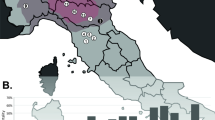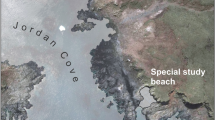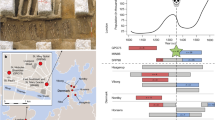Abstract
A mutant allele of the chemokine receptor CCR5 gene (CCR5-Δ32), which confers resistance to HIV-1 infection, is believed to have originated from a single mutation event in historic times, and rapidly expanded in Caucasian populations, owing to an unknown selective advantage. Among other candidates, the plague bacillus Yersinia pestis was implicated as a potential source of strong selective pressure on European populations during medieval times. Here, we report amplifications of the CCR5-Δ32 DNA sequence from up to 2900-year-old skeletal remains from different burial sites in central Germany and southern Italy. Furthermore, the allele frequency of CCR5-Δ32 in victims of the 14th century plague pandemic in Lübeck/northern Germany was not different from a historic control group. Our findings indicate that this mutation was prevalent already among prehistoric Europeans. The results also argue against the possibility of plague representing a major selective force that caused rapid increase in CCR5-Δ32 gene frequencies within these populations.
This is a preview of subscription content, access via your institution
Access options
Subscribe to this journal
Receive 6 digital issues and online access to articles
$119.00 per year
only $19.83 per issue
Buy this article
- Purchase on Springer Link
- Instant access to full article PDF
Prices may be subject to local taxes which are calculated during checkout

Similar content being viewed by others
References
Berger EA, Murphy PM, Farber JM . Chemokine receptors as HIV-1 coreceptors: roles in viral entry, tropism, and disease. Annu Rev Immunol 1999; 17: 657–700.
Ansari-Lari MA, Liu XM, Metzker ML, Rut AR, Gibbs RA . The extent of genetic variation in the CCR5 gene. Nat Genet 1997; 16: 221–222.
Carrington M, Kissner T, Gerrard B, Ivanov S, O'Brien SJ, Dean M . Novel alleles of the chemokine-receptor gene CCR5. Am J Hum Genet 1997; 61: 1261–1267.
Howard OM, Shirakawa AK, Turpin JA et al. Naturally occurring CCR5 extracellular and transmembrane domain variants affect HIV-1 co-receptor and ligand binding function. J Biol Chem 1999; 274: 16228–16234.
Blanpain C, Lee B, Tackoen M et al. Multiple nonfunctional alleles of CCR5 are frequent in various human populations. Blood 2000; 96: 1638–1645.
Dean M, Carrington M, Winkler C et al. Genetic restriction of HIV-1 infection and progression to AIDS by a deletion allele of the CKR5 structural gene. Science 1996; 273: 1856–1862.
Samson M, Libert F, Doranz BJ et al. Resistance to HIV-1 infection in caucasian individuals bearing mutant alleles of the CCR-5 chemokine receptor gene. Nature 1996; 382: 722–725.
Liu R, Paxton WA, Choe S et al. Homozygous defect in HIV-1 coreceptor accounts for resistance of some multiply-exposed individuals to HIV-1 infection. Cell 1996; 86: 367–377.
Martinson JJ, Chapman NH, Rees DC, Liu YT, Clegg JB . Global distribution of the CCR5 gene 32-basepair deletion. Nat Genet 1997; 16: 100–103.
Libert F, Cochaux P, Beckman G et al. The deltaCCR5 mutation conferring protection against HIV-1 in Caucasian populations has a single and recent origin in Northeastern Europe. Hum Mol Genet 1998; 7: 399–406.
Stephens JC, Reich DE, Goldstein DB et al. Dating the origin of the CCR5-Delta32 AIDS-resistance allele by the coalescence of haplotypes. Am J Hum Genet 1998; 62: 1507–1515.
Hummel S . Ancient DNA: Recovery and Analysis. Encyclopedia of the Human Genome. Nature Publishing Group: London, 2003.
Hummel S . Ancient DNA Typing. Methods, Strategies and Applications. Springer: Heidelberg, 2002.
Cooper A, Poinar HN . Ancient DNA: do it right or not at all. Science 2000; 289: 1139.
Dean M, Carrington M, O'Brien SJ . Balanced polymorphism selected by genetic versus infectious human disease. Annu Rev Genomics Hum Genet 2002; 3: 263–292.
Lalani AS, Masters J, Zeng W et al. Use of chemokine receptors by poxviruses. Science 1999; 286: 1968–1971.
Galvani AP, Slatkin M . Evaluating plague and smallpox as historical selective pressures for the CCR5-Delta 32 HIV-resistance allele. Proc Natl Acad Sci USA 2003; 100: 15276–15279.
Mecsas J, Franklin G, Kuziel WA, Brubaker RR, Falkow S, Mosier DE . CCR5 mutation and plague protection. Nature 2004; 427: 606.
Bramanti B, Hummel S, Schultes T, Herrmann B . STR allelic frequencies in a German skeleton collection. Anthropol Anz 2000; 58: 45–49.
Schultes T, Hummel S, Herrmann B . Amplification of Y-chromosomal STRs from ancient skeletal material. Hum Genet 1999; 104: 164–166.
Schmidt D, Hummel S, Herrmann B . Brief communication: multiplex X/Y-PCR improves sex identification in aDNA analysis. Am J Phys Anthropol 2003; 121: 337–341.
Bramanti B, Hummel S, Chiarelli B, Herrmann B . Ancient DNA analysis of the delta F508 mutation. Hum Biol 2003; 75: 105–115.
Baron H, Hummel S, Herrmann B . Mycobacterium tuberculosis complex DNA in ancient human bones. J Archaeol Sci 1996; 23: 667–671.
Acknowledgements
We thank A Rosenberger for detailed statistical analysis and S Flindt, L Klappauf and B Bramanti for the skeletal sample materials. The study was supported by a grant of the Federal Ministry of Education and Research to SH.
Author information
Authors and Affiliations
Corresponding author
Additional information
Supplementary Information accompanies the paper on Genes and Immunity (http://www.nature.com/gene).
Supplementary information
Rights and permissions
About this article
Cite this article
Hummel, S., Schmidt, D., Kremeyer, B. et al. Detection of the CCR5-Δ32 HIV resistance gene in Bronze Age skeletons. Genes Immun 6, 371–374 (2005). https://doi.org/10.1038/sj.gene.6364172
Received:
Revised:
Accepted:
Published:
Issue Date:
DOI: https://doi.org/10.1038/sj.gene.6364172
Keywords
This article is cited by
-
Pharmacogenomic implications of the evolutionary history of infectious diseases in Africa
The Pharmacogenomics Journal (2017)
-
Harnessing ancient genomes to study the history of human adaptation
Nature Reviews Genetics (2017)
-
Archaeogenetics in evolutionary medicine
Journal of Molecular Medicine (2016)
-
Re-inventing ancient human DNA
Investigative Genetics (2015)
-
The Osteological Paradox 20 Years Later: Past Perspectives, Future Directions
Journal of Archaeological Research (2015)



